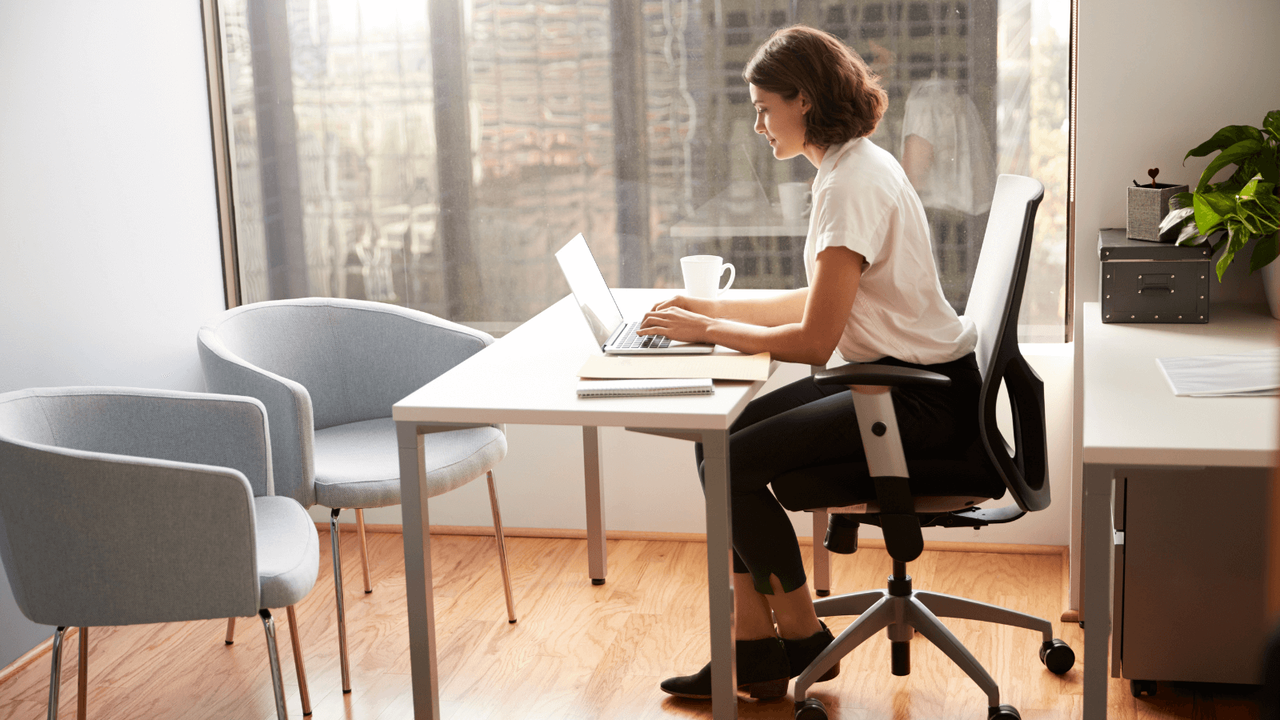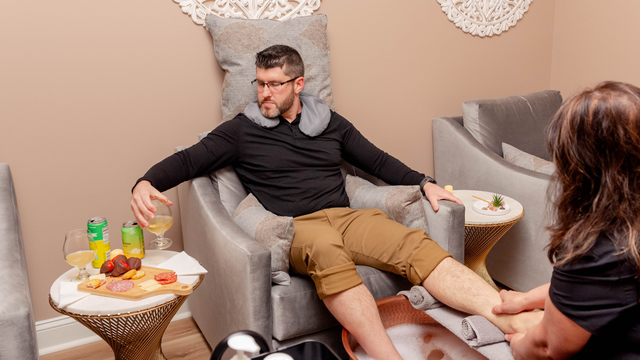Sitting for Long Periods Might Be Affecting Your Health

If you work a desk job, chances are you spend the majority of your day sitting behind a desk, only to come home (or simply log off, if you work from home) and sit to eat dinner before moving to sit in front of a tv or other screen. If you commute to work, you probably spend that time sitting, too.
While for some folks that might seem like an ideal lifestyle, sitting for prolonged periods of time can have a major impact on your health.
The health effects of sitting
We hear time and time again the importance of staying active and moving our bodies throughout the day, but that goes far beyond completing regular workouts to stay fit. Studies have shown that people who spend the majority of their days sedentary, or sitting, are more likely to develop a number of health problems, including the following:
Increased risk of heart disease
Sitting for prolonged periods can lead to an increase in body fat around your waist, a condition that is associated with an increased risk of heart disease. Studies have shown that people who sit for long periods are twice as likely to develop heart disease as those who move frequently throughout the day.
Muscle aches and pains
Sitting puts stress on your spine, neck, and back muscles, and sitting for prolonged periods can cause your hip muscles to tighten, leading to pain in the lower back. Poor posture often goes hand-in-hand with sitting for extended periods of time and can multiply the pain in the lower back and hips, as well as cause a handful of other health issues. Sitting in position to type can also lead to stiffness in the arms, neck, and shoulders.
Weight gain
Prolonged sedentary periods reduce the number of calories you burn in a day, which can lead to weight gain if you’re not reducing the number of calories you intake- this is especially true if you snack while you work. Non-exercise movement, like walking, standing, and even fidgeting, burns calories because they require you to expend energy, but sedentary activities like sitting or laying down require significantly less energy expenditure. Studies have shown that on average, office workers burn up to 1,000 calories less than agricultural workers, who spend the majority of their days standing and moving around.
Increased risk of Type 2 Diabetes
Scientists believe that sitting for prolonged periods can change the way your body reacts to insulin, the hormone that helps your body turn sugar and carbs into energy, and can eventually lead your body to develop insulin resistance, which is linked to type 2 diabetes.
Circulatory and vein problems
Sitting for long intervals can cause your blood flow to slow and your blood to pool in your legs, putting added pressure on your veins. That pressure can cause the veins to twist, swell, or bulge, a condition called varicose veins. Sitting too long can also cause a clot to form in the veins of your leg, called deep vein thrombosis or DVT, which can lead to leg swelling and pain. DVT can become incredibly dangerous if the clot dislodges and travels to your lungs.
You might also find that your ankles swell during the workday, this is a sign that your sitting sessions are lasting too long.
Memory and cognition problems
Reduced circulation from sitting includes reduced blood flow and oxygen to the brain, which can make it harder to process thoughts and perform other cognitive activities. Studies have shown that people who sit for long periods of time experience thinning in the medial temporal lobe of their brain, the region of the brain that’s imperative to the formation of new memories. Medial temporal lobe thinning is often a precursor to cognitive decline and dementia in middle-aged or older adults.
How to counter the effects
Even getting in a solid workout for one hour every day, doesn’t totally negate the damage caused by sitting for the other 23. In addition to getting in some daily exercise, try making changes throughout the remainder of your day to counter any periods where you’re sitting.
Break up your sedentary periods
It can be easy to get into the flow of work and lose track of time but don’t sit for your entire work shift. Instead, get up and move around every 30 minutes or so. Set reminders for yourself so you know when it’s time to stand. If you can, try to walk around for a few minutes, taking a couple of laps around your workplace. If that’s not possible, then stand at your desk and try shaking out your limbs or marching in place for a couple of minutes, or take a dance break. Anything to get your blood flowing and your muscles moving. You can even get your coworkers involved, too.
Stretch at your desk
Stretching, especially larger muscles like your legs and lower body, increases your circulation to your whole body, loosens up your muscles, and can all counteract the effects of staying sedentary. Set an alarm on your phone to remind you to take a stretch break daily. If you work in an office setting, you can even invite your colleagues to join you in daily stretch breaks, or suggest to your boss that group stretching or yoga sessions would be beneficial to your team.
Try these stretches:
- Stretch your arms overhead, clasp your hands, and slightly lean to one side, pausing when you feel a good stretch in the opposite side of your body. Hold the position for about 20 to 30 seconds before stretching to the other side.
- Clasp your hands behind your back, tilt your head back, and gently pull your clasped hands in a downward direction to stretch your shoulders. Hold for about 30 seconds.
- Gently pull one arm across your chest, holding it in place with your opposite hand. Hold the position for about 30 seconds. As a bonus, rotate the hand of the outstretched arm around in circles to loosen up your wrists.
- While standing, bend one knee and bring the heel of that foot up toward your butt so that your knee is pointing down. Gently hold your
Consider a standing desk or desk treadmill
If you or your employer has the budget and the space, look into an adjustable desk that allows you to stand while you work or, even better, a treadmill with a built-in desk (or one that goes under a desk) that allows you to walk while you work (if you have the coordination!). You might even suggest that your employer invests in one treadmill desk for the office that teammates can take turns using, so you and your coworkers can move around while still getting work done.
Tip: If you don’t have the budget for a standing desk, try elevating your workspace by placing your computer on a tall, sturdy box.
Massage can play an important role
If you sit for long periods of time, finding ways to keep your muscles loose and your blood flowing is important, and regular massage therapy is a great addition to the options listed above. Our Therapeutic Pain Relief massage does wonders to both relieve the pain and restore blood flow to tight muscles. Book a massage therapy session with the Mindful Touch team so that we can help you achieve total body health.
Self-Care Isn’t Just for Her: Why Spa Treatments Are the Perfect Gift for Dad This Father’s Day
This Father’s Day, it’s time to celebrate the men in our lives not just with a new tie or toolset, but with something more meaningful: the gift of self-care. Because self-care isn’t just for her, and Dad deserves the best in wellness, too.
Read MoreMassage Therapy Soothes Anxiety Symptoms
Anxiety disorders are at an all-time high in our society. According to the National Institute of Mental Health (NIMH), anxiety affects 18.1% of the population. Anxiety, and the fight or flight, biological response it produces, is a natural, normal, response to perceived danger.
Read MoreFreedom from Sciatic Nerve Pain with Therapeutic Massage
The sciatic nerve is the longest nerve in your body. Healing and resolving chronic pain is rarely an overnight fix. Prepare yourself for a journey.
Read More

